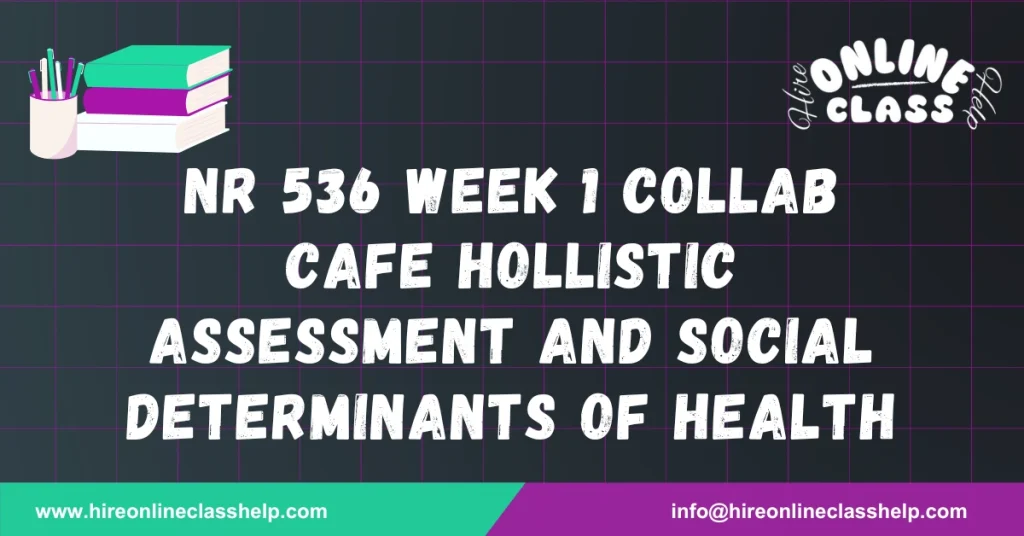






Name
Chamberlain University
NR-536: Advanced Health Assessment, Pathophysiology & Pharmacology for Advanced Nursing Practice
Prof. Name
Date
Social determinants of health are various factors influencing an individual’s health and well-being, often tied to political, social, and economic conditions (Islam, 2019). For this assignment, the selected social determinants are income, transportation, and time. Individuals with low income face higher risks for adverse health outcomes as they are less likely to have health insurance, a regular source of care, or access to new drugs, technologies, and primary or specialty care (Khullar & Chokshi, 2018). Additionally, many may refuse care due to its cost. For healthcare providers, delivering person-centered care to these individuals can be challenging, especially when patients decline necessary care due to financial constraints. Similarly, limited access to transportation restricts an individual’s ability to attend healthcare appointments or access nutritious food, impacting their health. Without reliable transportation, patients might miss crucial appointments, affecting their health outcomes. Time also plays a significant role; maintaining a healthy lifestyle requires time for healthcare access, proper nutrition, exercise, and rest. Individuals who cannot devote time to health-related activities may experience deteriorating health. Providers can advise on healthy habits, but these suggestions may not be practical for individuals without adequate time resources (Islam, 2019).
Using a holistic approach to assess social determinants of health can provide healthcare providers with valuable insights into factors impacting an individual’s health. One effective method is the use of screening tools, which are brief questionnaires that cover areas such as housing, food, transportation, utilities, and personal safety (O’Gurek & Henke, 2018). Another approach is to engage in open-ended conversations with individuals to better understand their personal circumstances. Combining these methods allows providers to examine an individual’s specific concerns through questionnaires and subsequent discussions, addressing topics that emerge as potential barriers to health. Some example questions to explore social determinants might include: (1) “What is your current living situation?” (2) “In the past six months, have you ever worried about running out of food?” and (3) “Within the last six months, have you struggled to pay for essentials like food, housing, or medical care?”
The Synergy Model emphasizes the importance of a positive, responsive relationship between nurses and patients, wherein patient needs guide nursing actions (Cordon et al., 2021). According to this model, effective nursing care involves assessing the patient’s needs and developing tailored strategies to address them. In building connections with patients, nurses first evaluate their ability to address each individual’s unique circumstances. Effective communication is essential to assess social determinants and health literacy, allowing nurses to determine the patient’s knowledge level and understanding of healthcare. By asking questions about the individual’s medical history and their prior experiences with healthcare, nurses can gauge health literacy. Following this, social determinant assessments are conducted in a clear, straightforward manner to facilitate understanding, enabling a patient-centered approach to address specific health challenges.
Cordon, C., Lounsbury, J., Palmer, D., & Shoemaker, C. (2021). Applying the Synergy Model to inform the nursing model of care in an inpatient and ambulatory care setting: The experience of two urban cancer institutions, Hamilton Health Sciences and Grand River Regional Cancer Centre. Canadian Oncology Nursing Journal, 31(2), 186-194. https://doi.org/10.5737/23688076312186194
Islam, M. M. (2019). Social Determinants of Health and Related Inequalities: Confusion and Implications. Frontiers in Public Health, 7, 11. https://doi.org/10.3389/fpubh.2019.00011
Khullar, D., & Chokshi, D. A. (2018). Health, income, & poverty: Where we are & what could help. Health Affairs Health Policy Brief, 1-5. https://doi.org/10.1377/hpb20180817.901935
O’Gurek, D. T., & Henke, C. (2018). A practical approach to screening for social determinants of health. Family Practice Management, 25(3), 7-12. https://www.aafp.org/fpm/2018/0500/p7.html?